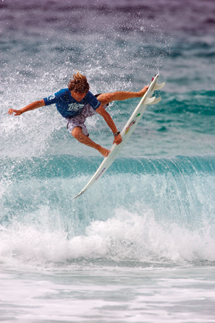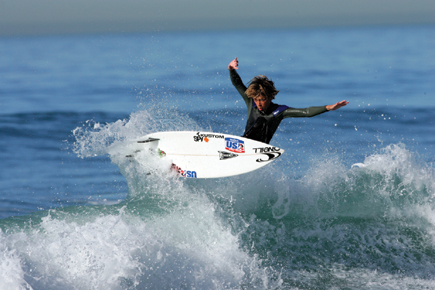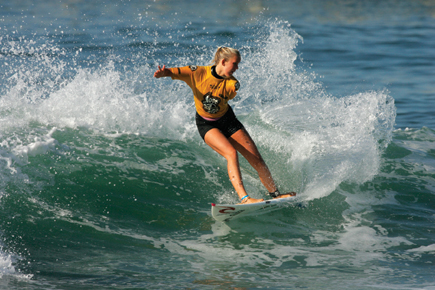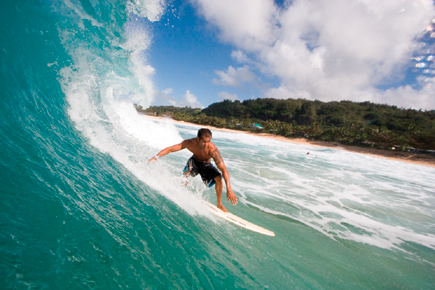On The Waterfront; AJ Neste’s Pro Surf Shot Strategies
Here are a few things AJ Neste's learned about photographing surfers:
One, it's the singer, not the song. "The most important part of
being successful at this," he says, "is knowing the surfer. It's
not just showing up somewhere and taking photos of random surfers. You won't
know their personal style."
 |
|
|
Two, you can always back up. "I was thinking about a 400mm lens to go
with my EOS-1D Mark II. But a surf photographer I know named Aaron Chang told
me, `No, man, you're going to need a 600. You can only walk so close
to the ocean, but you can always back up.'"
Pretty much everything else AJ needed to know he learned from his father, the
noted sports photographer Anthony Neste. "My dad was shooting for Sports
Illustrated and he would take me to spring training," AJ says. "From
the age of 5, I was my dad's camera donkey. That was my main job, and
I didn't really realize I was learning anything. I was just having fun."
 |
|
|
Being a pro photographer was never AJ's aim. "Growing up, sports
was the focus of my life," he says, "and my goal was to play pro
baseball. I played in college, but when I didn't get signed I wondered,
where do I go from here?"
Well, how about to the beach?
"I'd always been borrowing my dad's camera and taking photos.
When we moved from New York to Florida, when I was 15, I started surfing."
Soon he was taking photos of his fellow surfers. "One of the surfers I
was photographing, Will Tant, was trying to make it on the pro level. One day
he asked if I wanted to go to California. He was going to be filmed surfing
the coast and he wanted me to take photos."
 |
|
|
It wasn't a tough decision. "It was a magical trip, a photographer's
paradise," AJ says of that adventure, and on the day his surfing buddies
took him and his photos to Surfing magazine, it changed his life.
"We pull into the parking lot and one of my buddies says, `C'mon
let's go.' Well, I'm not going to go in--it's my
favorite magazine and I was nervous, but my friend is saying, `You gotta
show them your shots,' so we go and see one of the editors. He's
looking through the shots on my laptop and he stops midway and says, `Who
do you shoot for?' `Just for fun,' I say, `it's
my hobby,' and he says, `Well, you want to shoot for us?'
They needed a guy on the East Coast and at that moment I was it. So there it
was, from hobby to my first job."
 |
|
|
His second job wasn't long in coming, and it came largely as a result
of something he'd learned from his dad. "The thing with surf photographers,"
AJ says, "is that they'll find a spot that gives them good lighting
and a great background and then they'll stay there. But I'd seen
my father work the sidelines at football games for Sports Illustrated, and he'd
run up and down the field with a monopod. So when I was photographing surfers,
ideas would be flying through my head and I'd be running all over the
place. People were noticing me because I was moving around."
















































